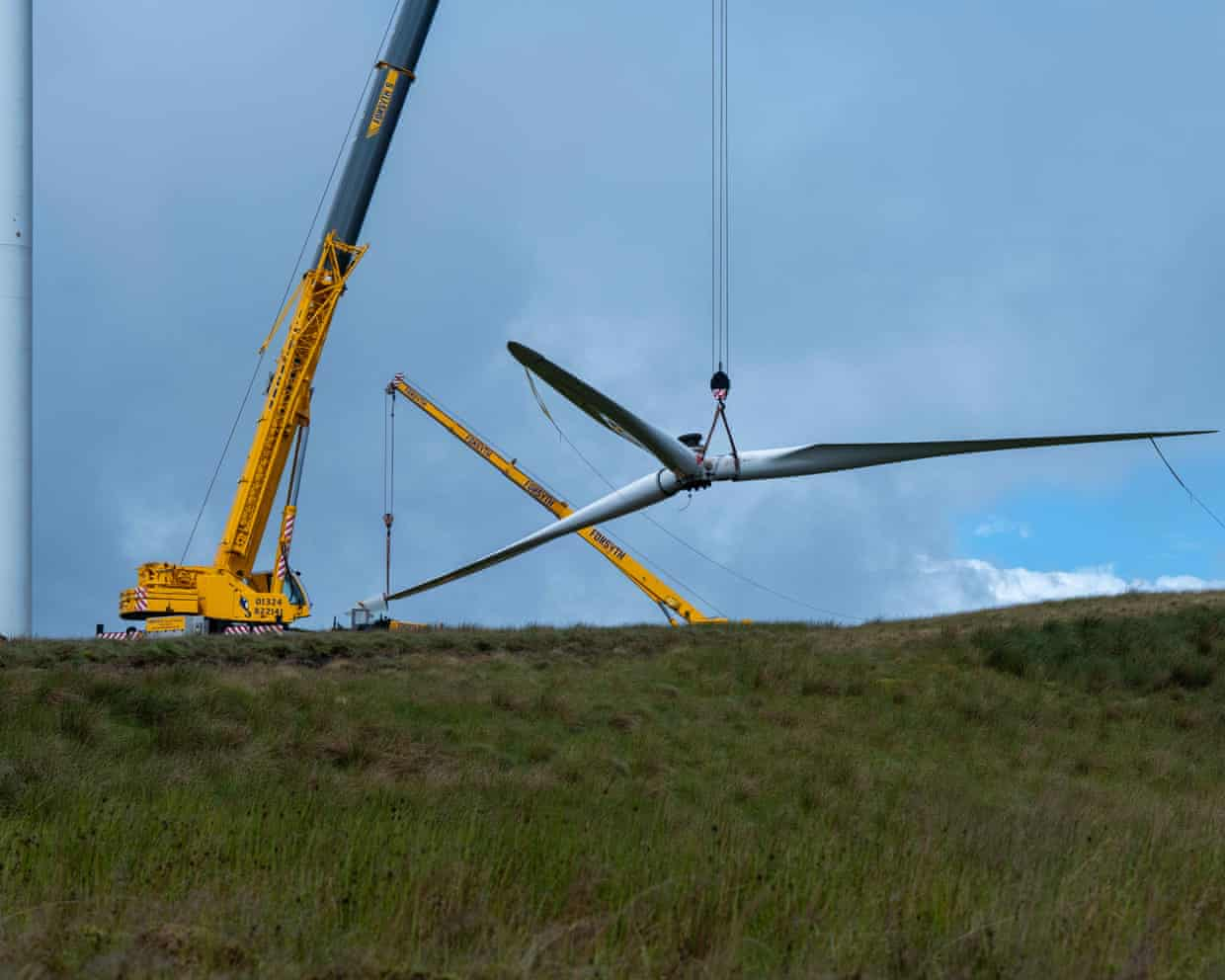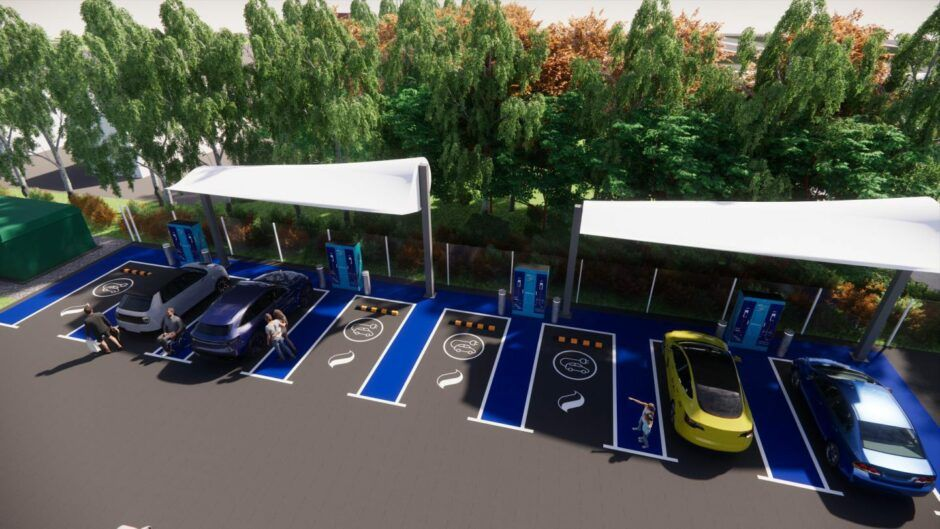In the port town of Irvine in Aryshire, Scotland, nearly 80 of Britain's oldest wind turbine blades lie abandoned in a former warehouse. These 55-meter blades belonged to the Hagshaw Hill project, Scotland's first commercial wind farm, which operated for three decades.
In their place, 14 new turbines have been installed, capable of generating five times more green energy.
A similar turbine upgrade is underway across Europe, promising to increase clean electricity production. However, this process also generates thousands of tons of hard-to-decompose waste.
According to WindEurope, the region is expected to decommission about 14,000 wind turbines in the next 5 years, creating 40,000-60,000 tons of waste. Germany will account for approximately 23,300 tons, followed by Spain and Italy with 16,000 and 2,300 tons, respectively.
 |
Dismantled turbine blades at the Hagshaw Hill wind farm, Scotland, September. Photo: *The Guardian* |
Handling this waste is a challenge for the wind power industry. Around 85-90% of a wind turbine is made of steel and other easily recyclable materials. However, the carbon fiber blades, designed to withstand weather wear and tear, are difficult to break down.
This challenge has spurred the recycling industry to find ways to deal with obsolete turbine blades.
Steven Lindsay, director of Reblade, a Scottish company specializing in wind turbine blade recycling, said they are applying circular economy principles to reuse and recycle the blades into valuable products. He was formerly an employee of ScottishPower, the company that owns the 106 MW Hagshaw Hill wind farm, which provides enough electricity for 66,000 homes.
His company repurposes blade sections into public infrastructure like bicycle shelters and bus stops. Recently, they reached an agreement with wind power developer SSE to reuse old blades from wind farms to create electric vehicle charging shelters in Dundee, Scotland. Bus shelters made from this material are also being commercialized.
According to Lindsay, repurposing the blades, given their aesthetic appeal and durability, is a better solution than shredding them for recycling.
 |
A model of a repurposed turbine blade as an electric vehicle shelter. Source: Reblade |
In Denmark, some turbine blades are also being repurposed as bicycle shelters, a popular mode of transport there. In Ireland, University College Cork used turbine blades to build a bridge, inaugurated in 2022.
Designers said that in addition to their robust structure, the gentle curves of the blades enhance the aesthetics of the 5-meter bridge spanning from Midleton to Youghal Greenway in East Cork.
However, repurposing addresses only a small fraction of the tens of thousands of tons of waste. Iberdrola, a Spanish energy company, aims to handle this waste on a larger scale. Three months ago, they and their partner FCC inaugurated the first recycling plant on the Iberian Peninsula (the region largely comprising Spain and Portugal), with the capacity to process up to 10,000 tons of blade waste annually. This is equivalent to one-sixth of the total waste expected by 2030.
The plant, with a 10 million euro investment, recycles blades into fiberglass and resin pellets. These materials will be used in energy, aerospace, automotive, textile, and construction sectors.
Another solution is to extend the lifespan of existing turbines. ORE Catapult, a UK government-backed innovation organization, collaborated with renewable energy developer RWE on laboratory simulations. Initial results suggest that wind turbine blades can safely have their lifespan extended by 50%. According to the research team, this could be a game-changer for the wind power industry, reducing the time blades spend in storage after they expire.
At the design stage, ScottishPower, SSE, and Denmark's Ørsted plan to develop a new generation of more easily recyclable wind turbine blades. They also plan to build recycling plants.
In the event that recycling doesn't keep pace with the rate of disposal in the wind power industry, Ørsted has committed to "storing any decommissioned turbine blades, avoiding landfill disposal".
Bao Bao (*The Guardian*, WEF)












